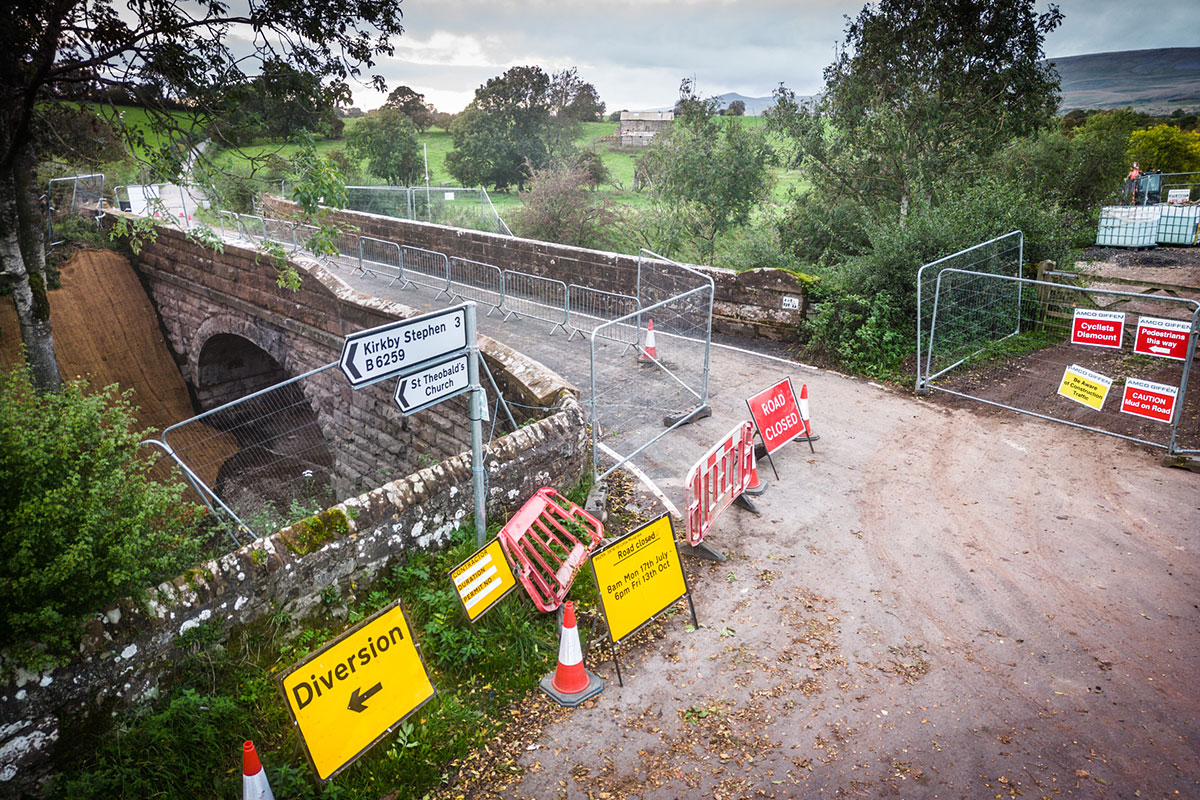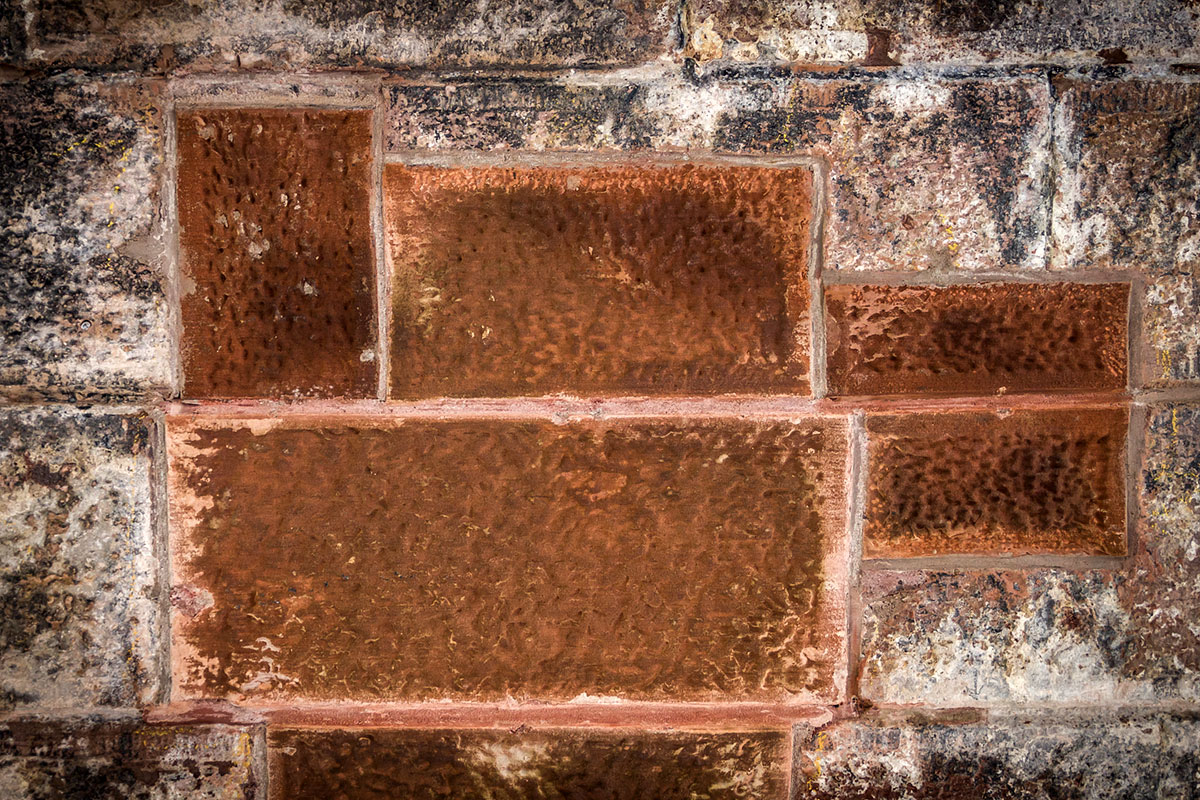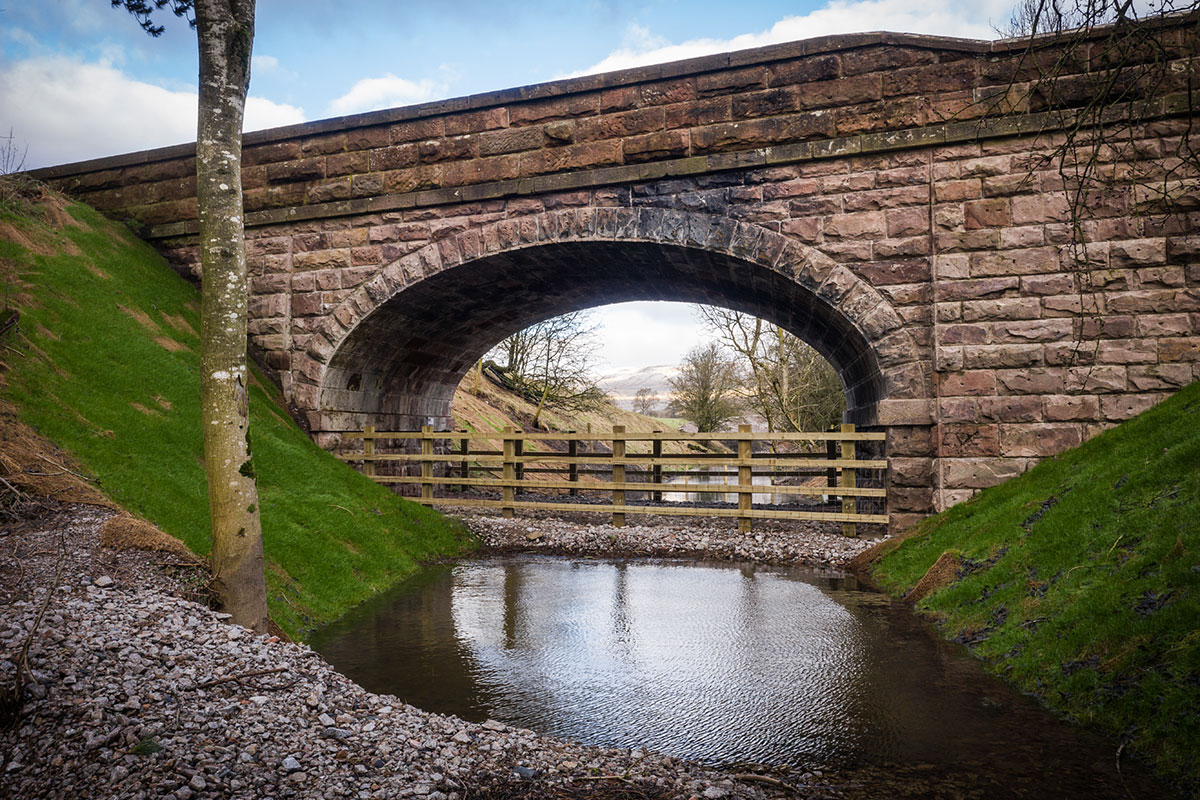where it all went wrong

Back to the start
Much frustration was expressed after signs for a 13-week closure of the B6259 - which crosses Great Musgrave bridge - were placed in advance of the work to remove the infill. National Highways maintained it was necessary “so our colleagues can work safely”, but there was no consultation with local businesses and the Parish Council criticised the company for the disruption it would cause. The diversionary route was 14 miles long and not suitable for many agricultural vehicles due to a low bridge.
The scheme got underway on 17 July and the site was demobilised on 13 October, two days after the 12-month deadline to return the bridge to its pre-infill state.
 |
 |
PHOTOS: THE HRE GROUP
Shortly prior to the works starting, an engineer from National Highways told the chair of Musgrave Parish Council that “When [the infill] material is removed we will still have a weak bridge & will have to undertake strengthening works.” And yet, in Week 10 of the programme, the story completely changed.
After spending two years trying to convince the world that the bridge did not have sufficient strength, NH admitted that “we when we’ve finished our work, we will be able to reopen Great Musgrave bridge without a weight restriction. The report we commissioned, known as the CS454 Assessment Certification used a more refined technique than the previous assessment by the council. It confirms that, despite the bridge’s capacity being previously limited, our refurbishment work and resurfacing of the deck will remove the need for a weight restriction, restoring the bridge to full capacity.”
But once again, this statement was a misrepresentation. The company had carried out no work to increase the bridge’s capacity: all it did was remove the infill and poorly repair some of the consequential damage inflicted on the structure. This work was undertaken using a ‘restoration mortar’ - often used for cosmetic patches - which masks defects and seals in moisture, preventing the stonework from breathing. The products have a predicted lifespan of around 30 years, if used correctly and looked after. According to conservation specialists, they then decay and will probably take the stone with them.
 |
 |
PHOTOS: THE HRE GROUP
The CS454 assessment, undertaken by Jacobs, National Highways’ own consultants, confirmed what respected engineers had been saying from the outset and was clear to anyone who understood masonry arches: Great Musgrave bridge had sufficient capacity for 40-tonne vehicles. Its Minimum Adequacy Factor - the multiplier on factored vehicle loads required to cause a collapse - was calculated at 3.43. In other words, the bridge could carry up to 137 tonnes.
National Highways’ longstanding claims that the bridge was weak proved completely false and the £124K spent on infilling represented a breath-taking waste of taxpayers’ money. Removing the stone and concrete cost a further £352K, although some money was saved by stockpiling the removed material on the former trackbed 60 metres north of the bridge - at the landowner’s invitation - rather than disposing of it at an appropriate facility. Thus, the railway is blocked once again.

PHOTO: THE HRE GROUP
Going forward
So where do we stand now? National Highways’ new decision-making and consultation processes - however well thought through - will only make a genuine difference if they are positively embraced by those charged with applying them. Despite undoubted efforts to rebuild its shattered reputation over the past couple of years, there’s been no contrition: the company still seems not to understand why the criticism of it was so vigorous. And it is still willing to distort reality when it comes to justifying past actions.

PHOTO: THE HRE GROUP
Making best use of existing assets is already recognised as vital in tackling our economic and climate crises. Legacy structures have a role to play, but can only do so if their custodian’s stewardship is sensitive and sympathetic.
 |
 |
About Us
The HRE Group is an alliance of walking, cycling and heritage campaigners, engineers and greenway developers who regard the Historical Railways Estate’s structures to be strategically valuable in the context of building a better future.
Last updated 21 October 2025
© 2025 The HRE Group


